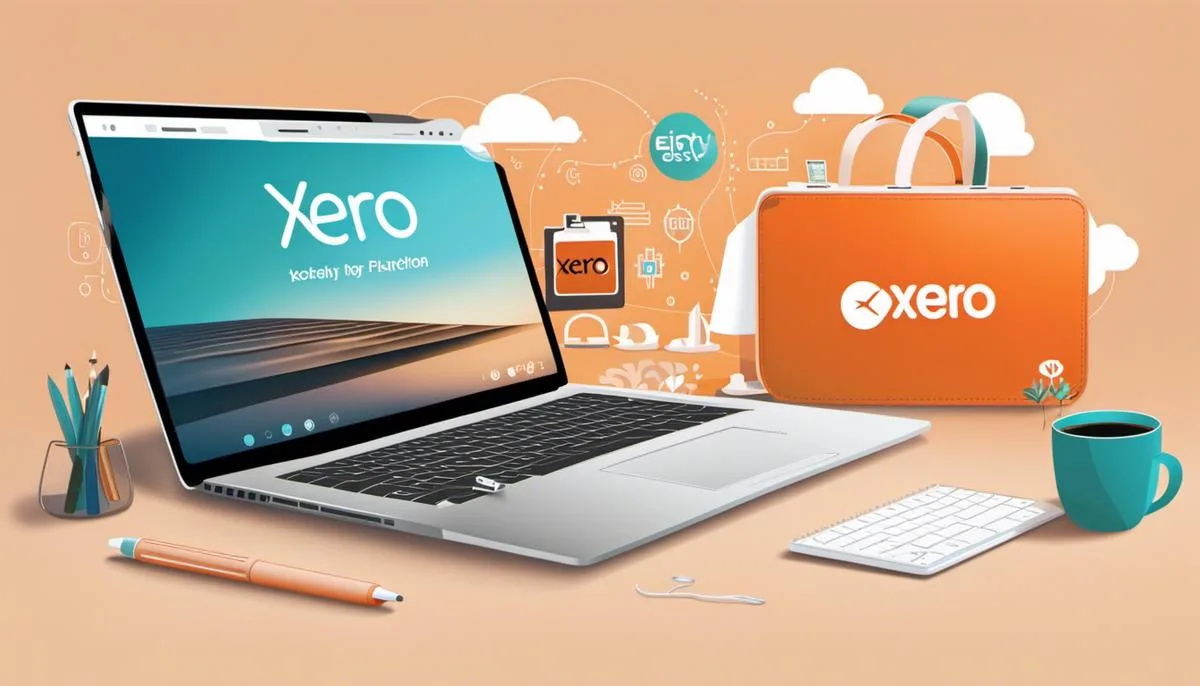In today’s swiftly digitizing world, platforms like Etsy and Xero are solving different yet closely interconnected challenges faced by small and medium-sized businesses. Etsy, a vibrant online marketplace for creative and unique goods, connects artisans and crafters to a global customer base.
On the other hand, Xero, a cloud-based accounting software platform, simplifies the financial management process for these businesses. It is, therefore, both logical and beneficial to understand the potential of integrating these two platforms to streamline operations, improve transparency, and ramp up business growth.
This understanding starts with a clear comprehension of the separate functionalities and core features of Etsy and Xero.
Understanding Etsy and Xero
Functionality of Etsy: Where Creativity Meets Commerce
At its core, Etsy offers sellers access to a global market and provides order management tools as well. As a seller, once an item is listed, it can be seen by the millions of visitors Etsy attracts. Etsy also aids sellers with tools to track orders, communicate with buyers, and manage payments. These facilities make it easier for people to turn their creative passions into successful small businesses.
Understanding Xero A Cloud-based Accounting Software
Xero is an online accounting software that aims to make accounting easier for small and medium-sized businesses. This New Zealand-based platform provides a holistic look at your business from a financial standpoint. Xero offers features such as invoicing, bill payments, bank reconciliation, and financial reporting. The two main functions of Xero that are often highlighted are its flexibility to scale with a growing business and its ability to provide real-time financial data.
Xero’s Core Features
Making Small Business Accounting Easier
Xero’s range of features is designed to aid in day-to-day business operations. The invoicing function allows businesses to create and issue invoices to clients. Xero also offers a payroll function that manages employee payments, taxes, and leave.
Furthermore, Xero’s feature of connecting with banks and reconciling transactions cuts down on much of the manual data entry task. It also provides reporting analytics that can help businesses track their performance and make informed financial decisions.
Integration of Etsy and Xero
Making Small Business Management Simpler
An integration between Etsy and Xero could bridge the gap between sales and accounting, simplifying processes for sellers on Etsy who also manage their business accounting through Xero.
Such integration can automatically update product listings, sales, and customer data in real time from Etsy to Xero. This connection will help sellers keep track of their sales, expenses, tax obligations, and net income effectively, while also reducing manual entry work and tracking errors.
The integration streamlines the process further by allowing the automatic generation of invoices in Xero when a sale is made on Etsy. Moreover, this integration may also extend to financial reporting, where sellers can monitor and manage their business’s financial health seamlessly.

Mastering Etsy Xero Integration
Step 1: Initial Setup and Configuration
The first step to integrating Etsy with Xero is to set up an account with both platforms if you haven’t done so already. Log into your Etsy seller account and then create a Xero account. Xero offers a 30-day free trial, which is an excellent way to test out the platform before committing to a monthly subscription. You’ll need to provide information about your business and select the industry category that most closely matches your company.
Step 2: Linking Etsy to Xero
Once you have both accounts, the next step is connecting them. In your Etsy account, go to the “Finances” section and find an option to “Link to Xero”. If this option is not available, you can find third-party apps that have pre-built integrations between Etsy and Xero.
Choose a reliable app service, then follow the instructions to add your Xero account. Such apps typically request read and write permissions to your Xero account.
Step 3: Data Synchronization
After linking the accounts, you’ll need to set up data synchronization. This means ensuring that sales, expenses, and inventory data from your Etsy shop get automatically updated in your Xero account. Most integration apps offer real-time or scheduled data synchronization. Real-time is recommended for keeping up-to-date and accurate records.
Step 4: Tracking Sales and Expenses
Now that you have linked and synchronized your Etsy and Xero accounts, you can start tracking sales and managing expenses. Any sale made on Etsy is automatically recorded as an invoice in Xero. Likewise, expenses incurred on Etsy, like fees and advertising costs, are recorded as bills in Xero.
This ensures that your financial records are accurate and up-to-date, minimizing manual input and reducing the risk of errors.
Step 5: Managing Listings and Transactions
Through the integration, you can manage your Etsy listings directly from Xero. Changes such as price modifications, product description updates, or stock additions can all be executed through the unified platform. Additionally, customer transactions, including orders, refunds, and customer communication, can be managed in Xero too.
Step 6: Automating Financial Reports
Etsy Xero integration also allows you to automate financial reporting. This is achieved by setting up rules in Xero that are triggered by specific actions on Etsy. For instance, you could set a rule to generate a sales report every time a product is sold. These real-time data and reports provide clear insights into the financial health of your business, enabling you to make informed decisions.
The Etsy Xero integration offers a unified platform to manage your Etsy business’s financial aspects. It simplifies the tracking of sales and expenses, provides automatic data synchronization, and creates automated real-time reports, all of which save you valuable time and help streamline your business operations.

Troubleshooting and Optimization
Etsy and Xero Integration Issues – Trouble in Paradise
Etsy and Xero integration might generate a gamut of issues, especially during and after the integration process. Here are some methods to identify and resolve these issues.
(1) Failure to connect
Integration may fail due to incorrect Etsy Shop name or Xero Public/Private keys. Double-check your details and ensure all are accurate.
(2) Data Syncing issues
Automatic data syncing might not work due to problems in connection or compatibility. You might require specific settings for each platform to function together seamlessly. Validate your settings and try running a manual sync before setting it to auto-sync.
(3) Incomplete Data Transfer
Products without SKUs or categories set up might not transfer correctly. Ensure all your products on Etsy have appropriate details and categories assigned.
(4) Incorrect Financial Data Transfer
Errors can occur due to discrepancies in Etsy and Xero’s financial data configurations. Always verify your tax settings and create matching tax zones in both Etsy and Xero.
(5) Duplicate Orders
Orders might duplicate if they are edited after syncing. To avoid this issue, edit your orders before syncing or revert the order, edit it, and resync.
Boosting Performance: Optimization Strategies
Here are some strategies to optimize your integrated system, manage your business financials more competently, and ensure smooth functioning.
(1) Scheduled Adjustments for Automatic Data Syncing
To optimize the process, schedule your automatic data syncing during off-peak hours. This way, it won’t hamper your online transactions and other business activities.
(2) Customizing reports
Xero offers comprehensive financial reports. To monitor your business in detail, customize these reports based on your specific needs. For instance, you can create a report solely to compare your estimated and actual revenue from Etsy.
(3) Leveraging additional tools
Consider using additional tools to make the most of your integrated system. For instance, third-party apps like “A2X for Etsy” can help you better manage your sales, fees, and other associated costs.
(4) Regular Monitoring and Maintenance
For smooth operations, regularly monitor your integrations. Check for updates and keep your apps updated accordingly. Regular maintenance also helps in identifying potential problems before they morph into significant issues.
With these solutions, you can troubleshoot common issues you may face during and after the integration process. Moreover, by optimizing the integrated system, you can maintain better performance and efficiency for your business financials.

Photo by austindistel on Unsplash
Naturally, no technology integration journey is without its obstacles. It’s common to encounter issues during and after the Etsy and Xero integration process. However, the key to overcoming these is equipping oneself with robust troubleshooting knowledge and optimization methodologies.
By learning how to adjust schedules for automatic data syncing, customizing reports, and harnessing additional tools for more advanced functions, businesses can ensure that the integrated system operates at peak efficiency – thereby driving both profitability and growth.
Ultimately, in an ever-evolving digital landscape, the integration of Etsy and Xero signifies more than just operational optimization – it symbolizes a commitment to harnessing technology to catalyze business transformation.

